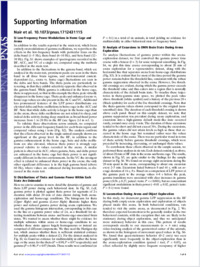Basal forebrain contributes to default mode network regulation
- Nair, Jayakrishnan Visual Cognition Laboratory, Department of Medicine, University of Fribourg, Switzerland
- Klaassen, Arndt-Lukas Visual Cognition Laboratory, Department of Medicine, University of Fribourg, Switzerland - Department of Psychology, University of Fribourg, Switzerland
- Arato, Jozsef Department of Cognitive Science, Central European University, Budapest, Hungary
- Vyssotski, Alexei L. Institute of Neuroinformatics, ETH Zürich, Switzerland
- Harvey, Michael Visual Cognition Laboratory, Department of Medicine, University of Fribourg, Switzerland
- Rainer, Gregor Visual Cognition Laboratory, Department of Medicine, University of Fribourg, Switzerland
-
06.02.2018
Published in:
- Proceedings of the National Academy of Sciences. - 2018, vol. 115, no. 6, p. 1352–1357
English
The default mode network (DMN) is a collection of cortical brain regions that is active during states of rest or quiet wakefulness in humans and other mammalian species. A pertinent characteristic of the DMN is a suppression of local field potential gamma activity during cognitive task performance as well as during engagement with external sensory stimuli. Conversely, gamma activity is elevated in the DMN during rest. Here, we document that the rat basal forebrain (BF) exhibits the same pattern of responses, namely pronounced gamma oscillations during quiet wakefulness in the home cage and suppression of this activity during active exploration of an unfamiliar environment. We show that gamma oscillations are localized to the BF and that gamma-band activity in the BF has a directional influence on a hub of the rat DMN, the anterior cingulate cortex, during DMN-dominated brain states. The BF is well known as an ascending, activating, neuromodulatory system involved in wake–sleep regulation, memory formation, and regulation of sensory information processing. Our findings suggest a hitherto undocumented role of the BF as a subcortical node of the DMN, which we speculate may be important for switching between internally and externally directed brain states. We discuss potential BF projection circuits that could underlie its role in DMN regulation and highlight that certain BF nuclei may provide potential target regions for up- or down-regulation of DMN activity that might prove useful for treatment of DMN dysfunction in conditions such as epilepsy or major depressive disorder.
- Faculty
- Faculté des sciences et de médecine
- Department
- Département de Médecine
- Language
-
- English
- Classification
- Biological sciences
- License
-
License undefined
- Identifiers
-
- RERO DOC 306883
- DOI 10.1073/pnas.1712431115
- Persistent URL
- https://folia.unifr.ch/unifr/documents/306402
Other files
Statistics
Document views: 119
File downloads:
- pdf: 172
- Supplementary material: 154

